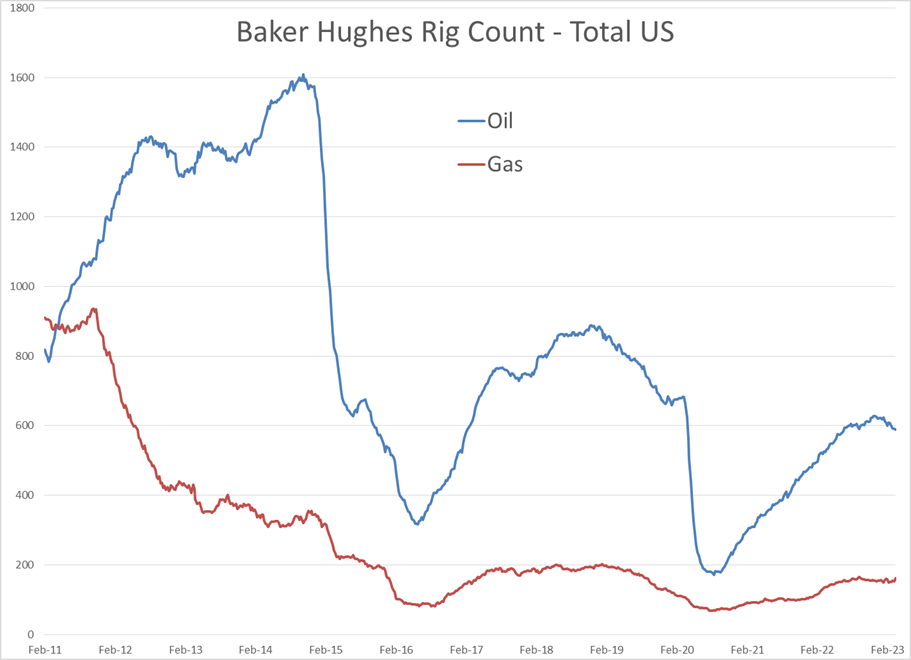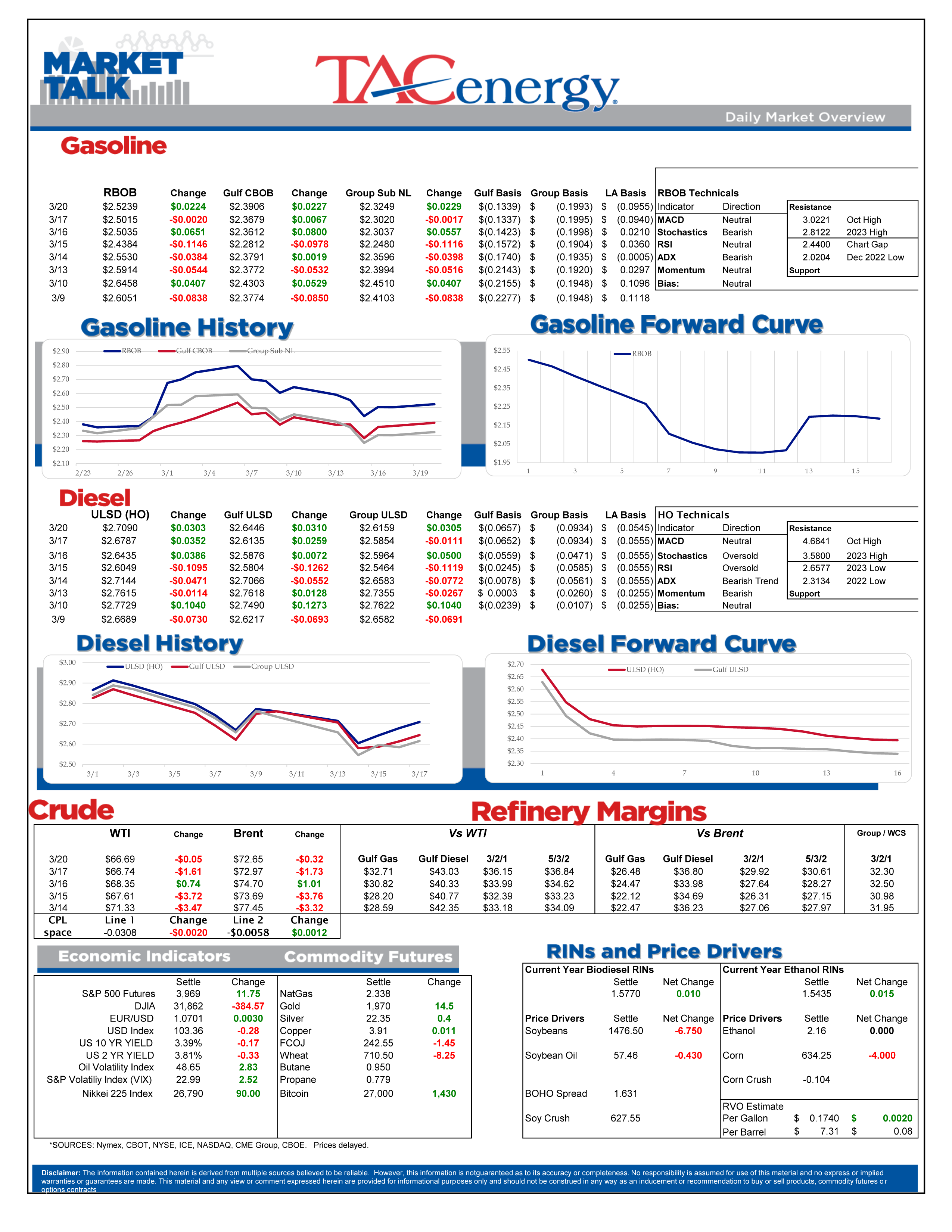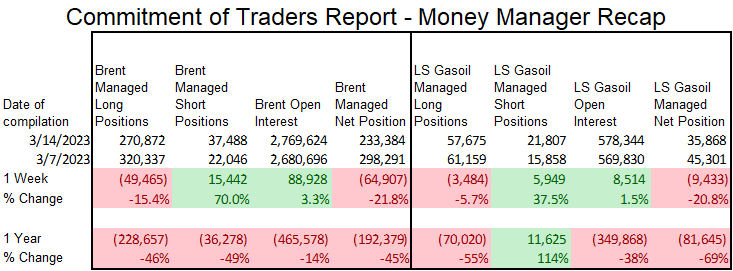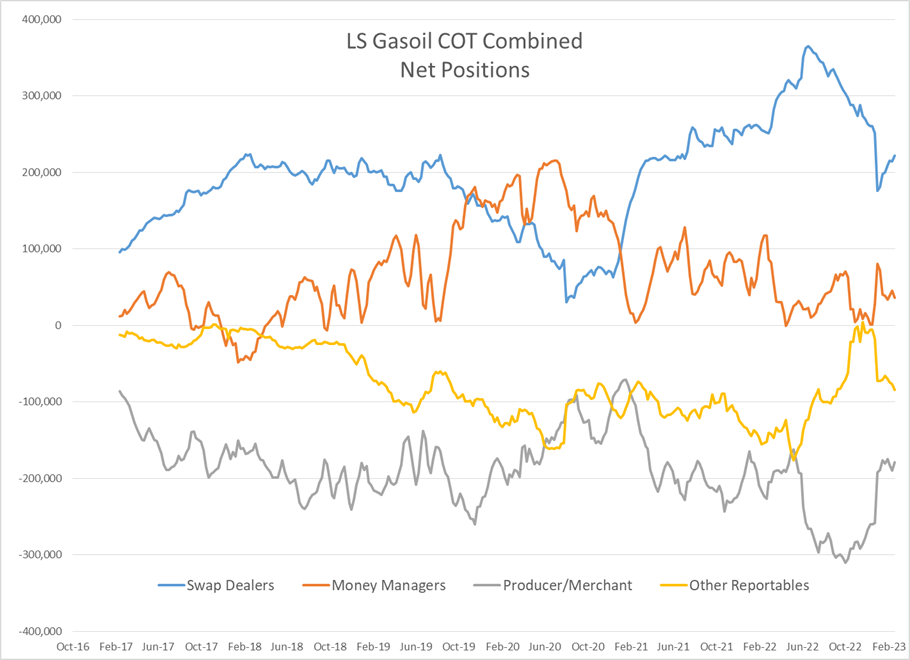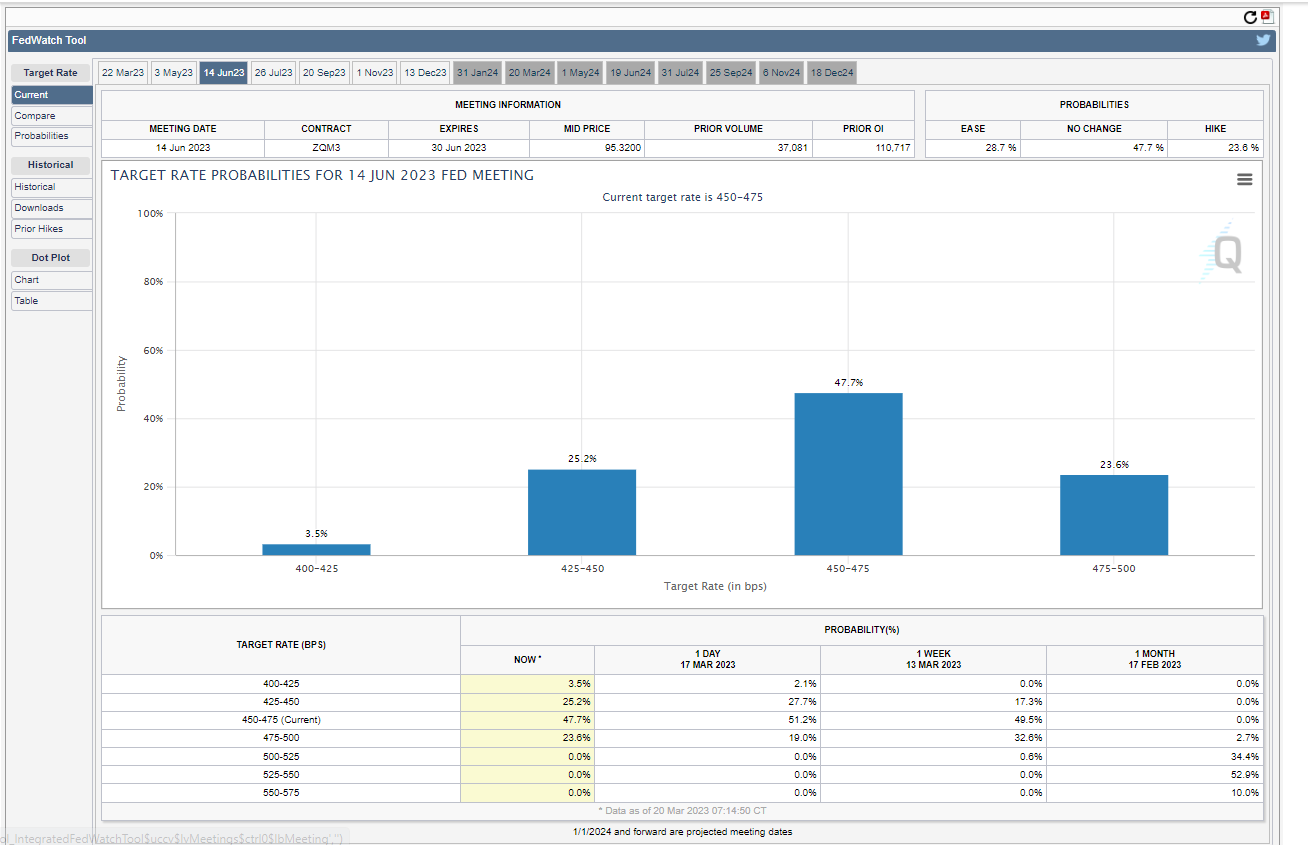Volatility And Uncertainty Continue Dominant Market Themes After Weekend Of Extraordinary Intervention By Central Banks

Volatility and uncertainty continue to be the dominant market themes after another weekend of extraordinary intervention by central banks to try and limit the fallout of the latest crisis of confidence in the system.
We’ve already seen big swings in both energy and equity markets in the overnight sessions. Bulls seem to be arguing that the coordinated actions by central banks and some of the world’s largest financial institutions are proving there will not be a liquidity crisis, while the bears seem to be saying, “If everything is fine, why did two of Europe’s largest banks just get forced into a shotgun wedding?”
Refined product prices dropped 9 cents at their lowest levels, but have since wiped out those losses and turned to modest gains in yet another sign of the choppy action that’s likely in the days ahead. WTI meanwhile set a fresh 15-month low before recovering most of its losses on the day, and charts suggest we could soon see prices in the $50 range if a recovery rally doesn’t come soon.
The CFTC announced Friday it was further delaying its Commitments of Traders reports as it needed to review the data after the cyber-attack that took out a service provider and has kept the position reporting at least 3 weeks behind schedule since early February. ICE continues to publish its weekly COT data on a normal schedule, and showed money managers bailing out of long positions in Brent and Gasoil contracts last week as prices plummeted, and a large amount of new speculative money came in to bet that prices would continue to fall, even though they’re already at 15-month lows. Given the price action we’ve seen in NYMEX contracts the past two weeks, it’s not hard to imagine a similar liquidation of long positions has been going on here as well.
Fed Fund futures traders are laying 37% odds the FOMC will stop their rate hikes this week, while 63% think they’ll continue to increase rates by 25 points according to the CME’s Fed watch tool. Two weeks ago, literally, no money was bet on the FED holding steady. The forward outlook shows that nearly 30% of the money is betting the FOMC will be lowering rates by the June meeting, compared to 0% betting that direction a month ago.
Baker Hughes reported US Oil rigs dropped by 1 last week to a new 9-month low, while natural gas rigs jumped by 9, setting a new 6-month high. That dichotomy was most obvious in the Eagle Ford basin where 6 oil rigs were taken offline, while 4 new gas rigs were added. The Marcellus shale accounted for the remainder of the increase in gas rigs, while the Permian saw a healthy increase of 5 oil rigs negated by the drop elsewhere.
Both Flint Hills and Citgo reported upsets at their Corpus Christi refineries Friday, following the cold front that battered the region with high winds and heavy rain Thursday. The filings made to the TCEQ suggest Citgo may have been forced to take an FCC unit offline, while FHR may have avoided any unit shutdowns during their event. Neither issue is likely to have much influence on Gulf Coast spot markets since Corpus Christi plants don’t touch the Colonial pipeline origin hubs, but they could create product tightness along the San Antonio, Austin, and DFW corridor if they continue.
More French refinery workers are walking off the job this week after pension reforms were passed by parliament last week. The impact of the protests may now turn from a nuisance to a more serious disruption as more facilities are expected to be taken offline.
A worker at the CVR refinery in Coffeyville Kansas was killed over the weekend, as that facility was undergoing planned maintenance. No reports yet as to the cause of that incident, or the potential long-term impact.
Click here to download a PDF of today's TACenergy Market Talk Update.
Latest Posts
Week 16 - US DOE Inventory Recap
Energy Markets Trading Quietly In The Red As Ethanol Prices Rally To Five-Month High
The Struggle For Renewable Producers Continues As A Rapid Influx Of Supply And Crashing Credit Prices Make Biodiesel
After Years Of Backwardation, Diesel Prices Have Slipped Into Contango Over The Past Week
Social Media
News & Views
View All
Week 16 - US DOE Inventory Recap

Energy Markets Trading Quietly In The Red As Ethanol Prices Rally To Five-Month High
Energy markets are trading quietly in the red to start Wednesday’s session after a healthy bounce Tuesday afternoon suggested the Israel-Iran-linked liquidation had finally run its course.
There are reports of more Ukrainian strikes on Russian energy assets overnight, but the sources are sketchy so far, and the market doesn’t seem to be reacting as if this is legitimate news.
Ethanol prices have rallied to a 5-month high this week as corn and other grain prices have rallied after the latest crop progress update highlighted risks to farmers this year, lower grain export expectations from Ukraine, and the approval of E15 blends this summer despite the fact it pollutes more. The rally in grain and renewables prices has also helped RIN values find a bid after it looked like they were about to test their 4-year lows last week.
The API reported small changes in refined product inventories last week, with gasoline stocks down about 600,000, while distillates were up 724,000. Crude oil inventories increased by 3.2 million barrels according to the industry-group estimates. The DOE’s weekly report is due out at its normal time this morning.
Total reported another upset at its Port Arthur refinery that’s been a frequent flier on the TCEQ alerts since the January deep freeze knocked it offline and damaged multiple operating units. This latest upset seems minor as the un-named unit impacted was returned to normal operations in under an hour. Gulf Coast basis markets have shrugged off most reports of refinery upsets this year as the region remains well supplied, and it’s unlikely we’ll see any impact from this news.
California conversely reacted in a big way to reports of an upset at Chevron’s El Segundo refinery outside of LA, with CARBOB basis values jumping by more than a dime. Energy News Today continued to show its value by reporting the upset before the flaring notice was even reported to area regulators, proving once again it’s ahead of the curve on refinery-related events. Another industry news outlet meanwhile struggled just to remember where the country’s largest diesel seller is located.
Click here to download a PDF of today's TACenergy Market Talk

The Struggle For Renewable Producers Continues As A Rapid Influx Of Supply And Crashing Credit Prices Make Biodiesel
The sigh of relief selloff continues in energy markets Tuesday morning, with gasoline prices now down more than 20 cents in 7 sessions, while diesel prices have dropped 26 cents in the past 12. Crude oil prices are within a few pennies of reaching a 1 month low as a lack of headlines from the world’s hot spots allows some reflection into the state of the world’s spare capacity for both oil and refined products.
Gasoline prices are trading near a 6-week low this morning, but still need to fall about another nickel in order to break the weekly trendline that pushed prices steadily higher since December. If that trend breaks, it will be safer to say that we saw the end of the spring gasoline rally on April 12th for the 2nd year in a row. Last year RBOB futures peaked on April 12 at $2.8943 and bottomed out on May 4th at $2.2500. The high (at this point) for this year was set on April 12th at $2.8516, and the low overnight was $2.6454.
It’s not just energy commodities that are seeing an unwind of the “flight to safety” trade: Gold prices had their biggest selloff in 2 years Monday and continue to point lower today. Just how much money poured into commodities in the weeks leading up to the direct confrontation between Israel and Iran is unclear, but we have seen in year’s past that these unwind-events can create a snowball effect as traders can be forced to sell to cover their margin calls.
Supply > Demand: The EIA this morning highlighted the record setting demand for natural gas in the US last year, which was not nearly enough to offset the glut of supply that forced prices to a record low in February. A shortage of natural gas in Europe was a key driver of the chaotic markets that smashed just about every record in 2022, and an excess of natural gas supply in Europe and the US this year is acting as a buffer, particularly on diesel prices.
The struggle for renewable producers continues as a rapid influx of supply and crashing credit prices make Biodiesel, RD and SAF unprofitable for many. In addition to the plant closures announced in the past 6 months, Vertex Energy reported Monday it’s operating its Renewable Diesel facility in Mobile AL at just 50% of capacity in Q1. The truly scary part for many is that the $1/gallon Blender's tax credit ends this year and is being replaced by the “Clean” Fuel production credit that forces producers to prove their emissions reductions in order to qualify for an increased subsidy. It’s impossible to say at this point how much the net reduction will be for domestic producers, but importers will get nothing, and at current CI values, many biodiesel producers may see their “blend credit” cut by more than half.
Click here to download a PDF of today's TACenergy Market Talk.
